

So, when I say "change the image", I mean the torch does affect the calibration, in the sense that I get different patterns of stripes based on the position of the torch, but it's still just outputting stripes.
Here are two scans I made by waving the torch around randomly during the calibration, then resting the torch on the glass.
For some reason each pixel is just outputing the same brightness for the whole duration of the scan, except for that black spot where the torch is, which is weird.
I managed to change the image by just shining a torch into it during the calibration and the scan. This is exciting, I might be making progress :-)
Ok, thank you.
I genuinely laughed out loud at the title. Well done :-)
 Scanned with a modified N650U
Scanned with a modified N650U
@Leavingoldhabits Hi again, can I ask you some technical questions? I'm struggling modify my scanner. I've removed the clips holding the PCB, and I even made a test scan in that state, and it still worked. Then I spent hours milling out the pinhole array. But when I assembled it again, I get weird scans.
I have modified two different scanners. LiDe 110 - I get a tall narrow PNG file with some digital noise. I assumed I damaged the sensor, or a ribbon cable or something, so I shelved it, and looked for another scanner.
N650U - I took more care modifying this one. I get a full width PNG file, but it has a narrow strip of white on one side, and black everywhere else. I wonder if it is related to the initial calibration that it does before scanning. I left the LED in tact, but I removed the prism, so maybe it's lighting up just that one end of the calibration strip?
Did you have any calibration problems? Have you encountered anything like this? Do you have any advice?
Thanks
That's caused by the fresnel lens. Its a cheap plastic one that I picked up at a craft store.
I have photos to share:
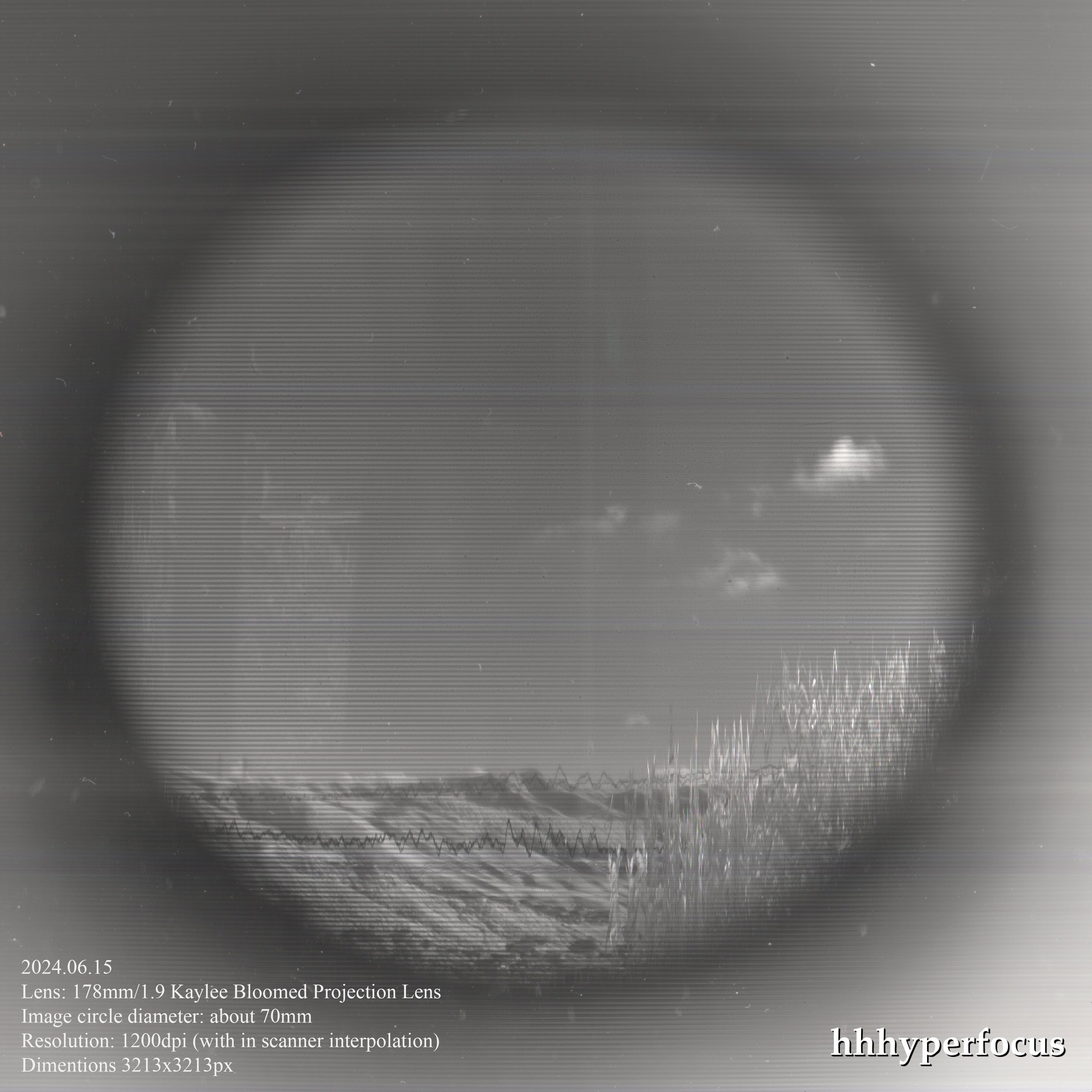
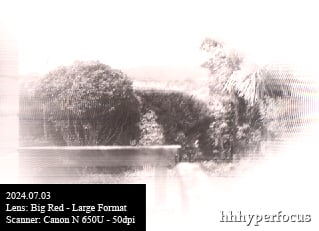


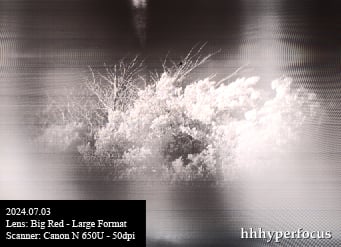
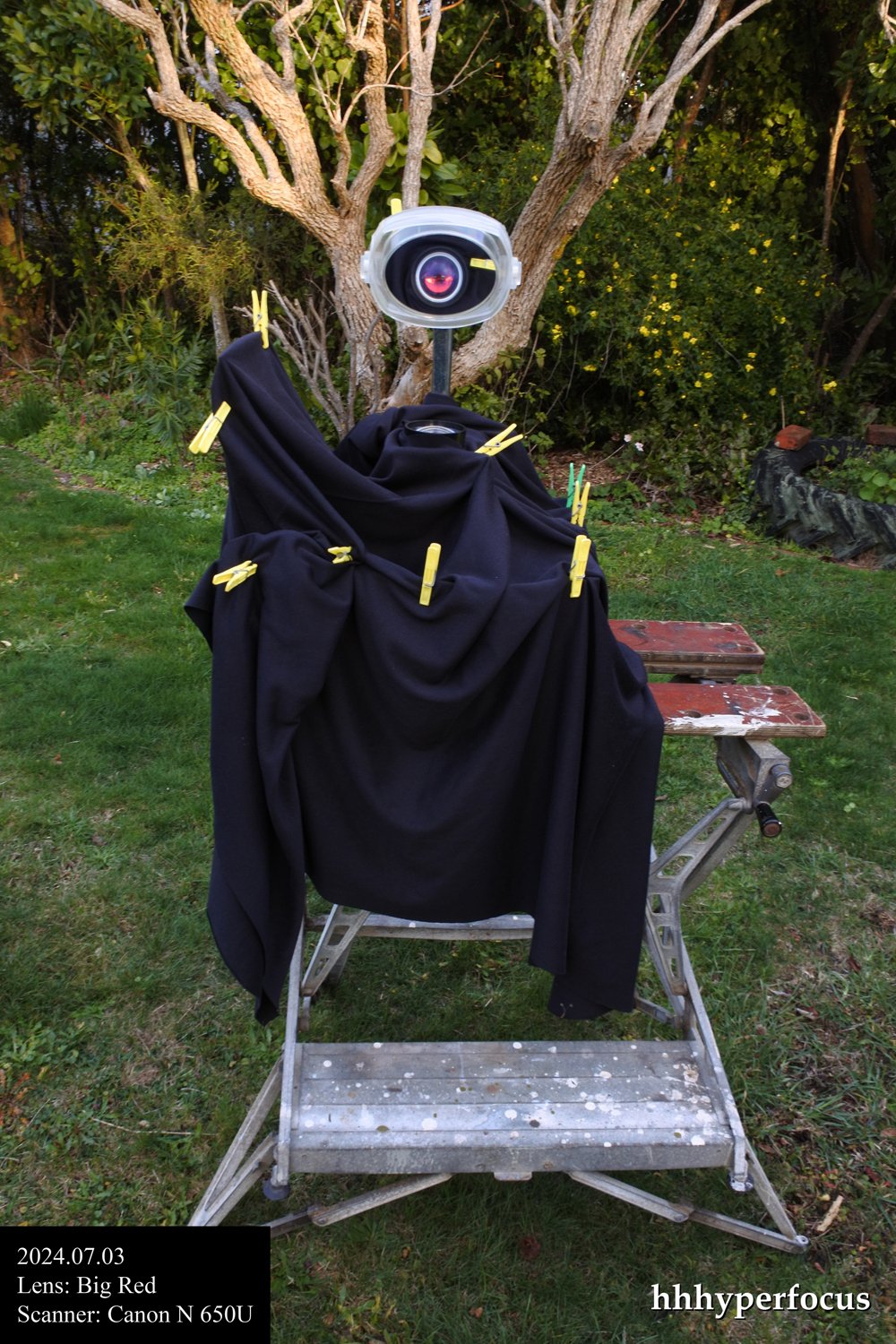
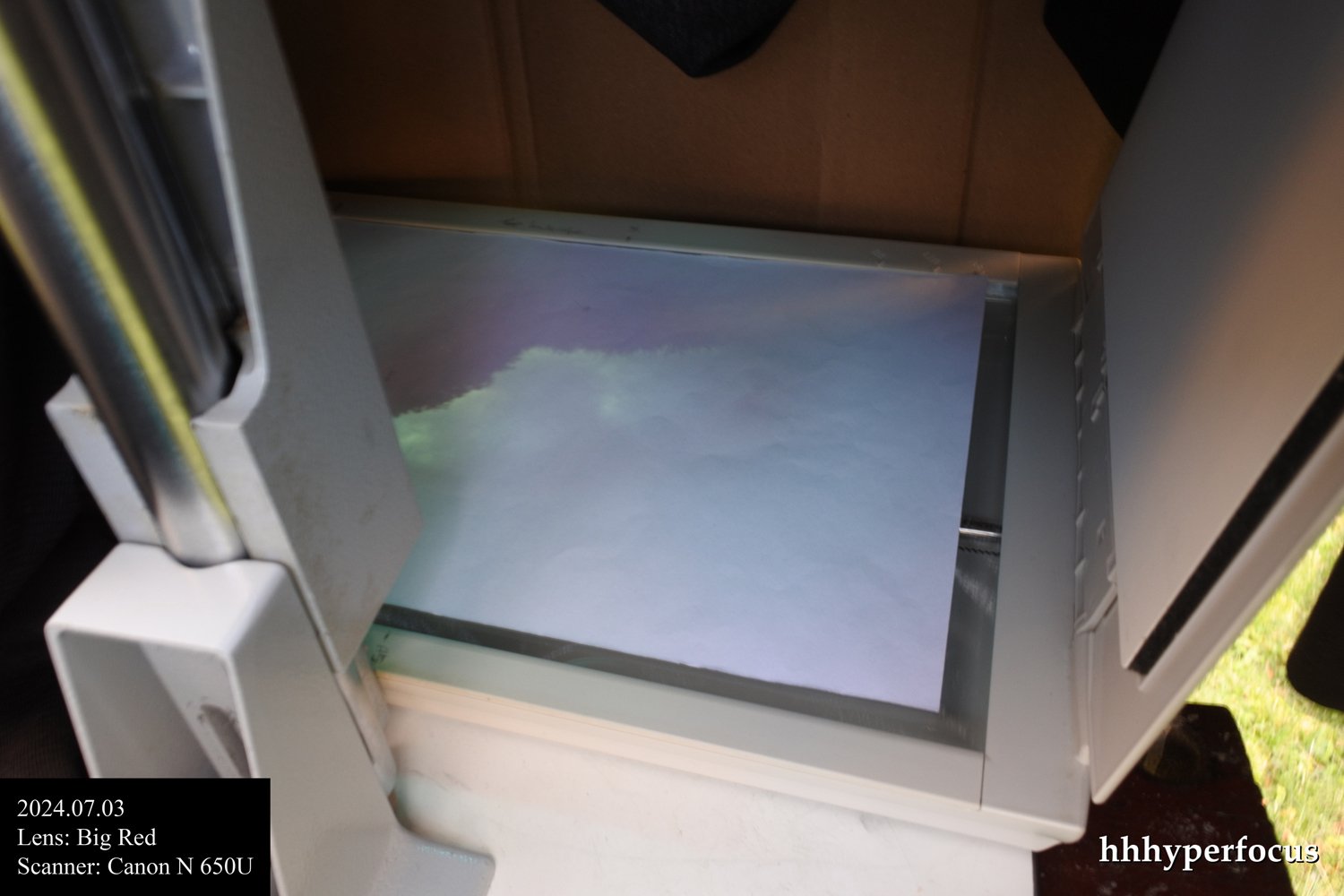
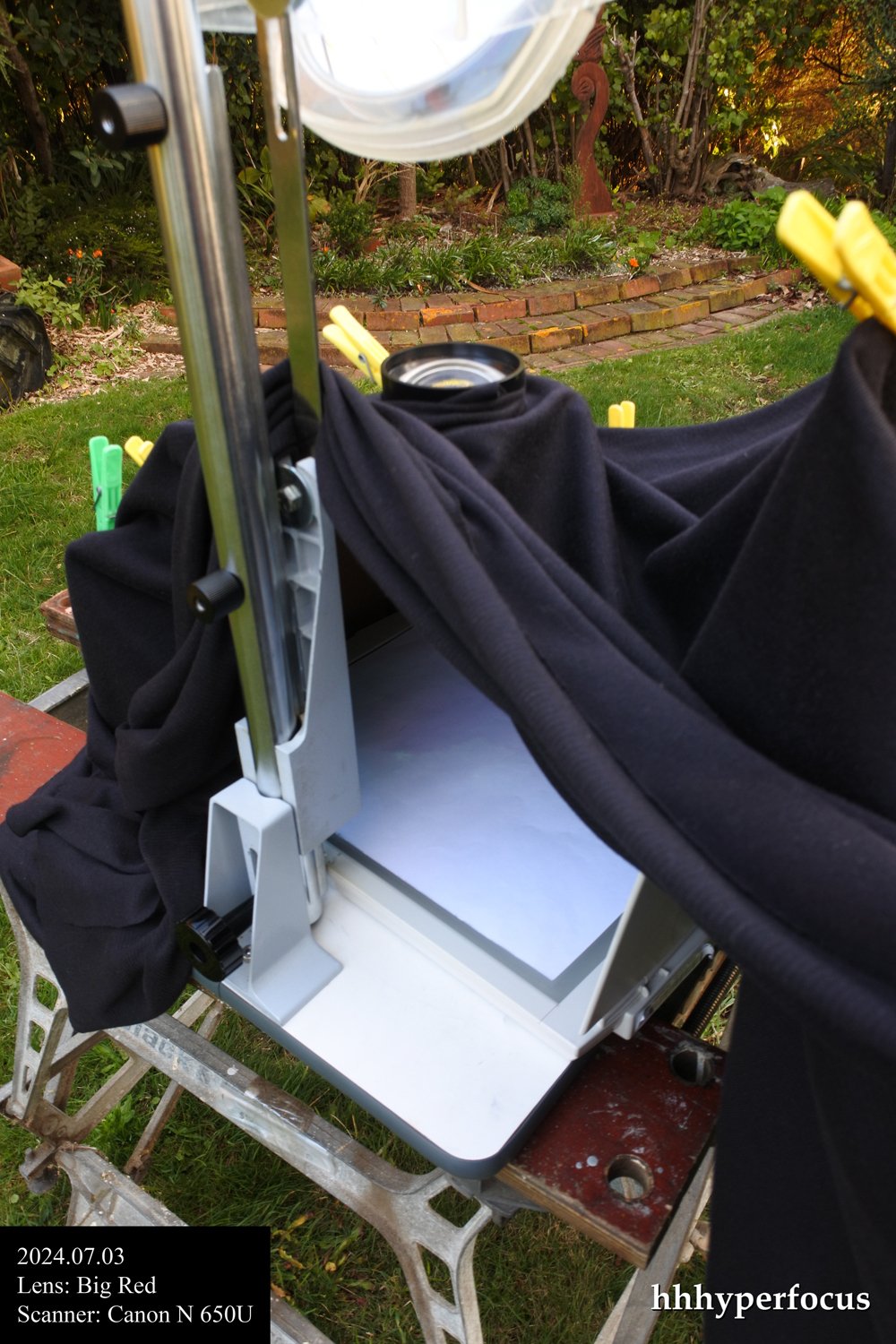
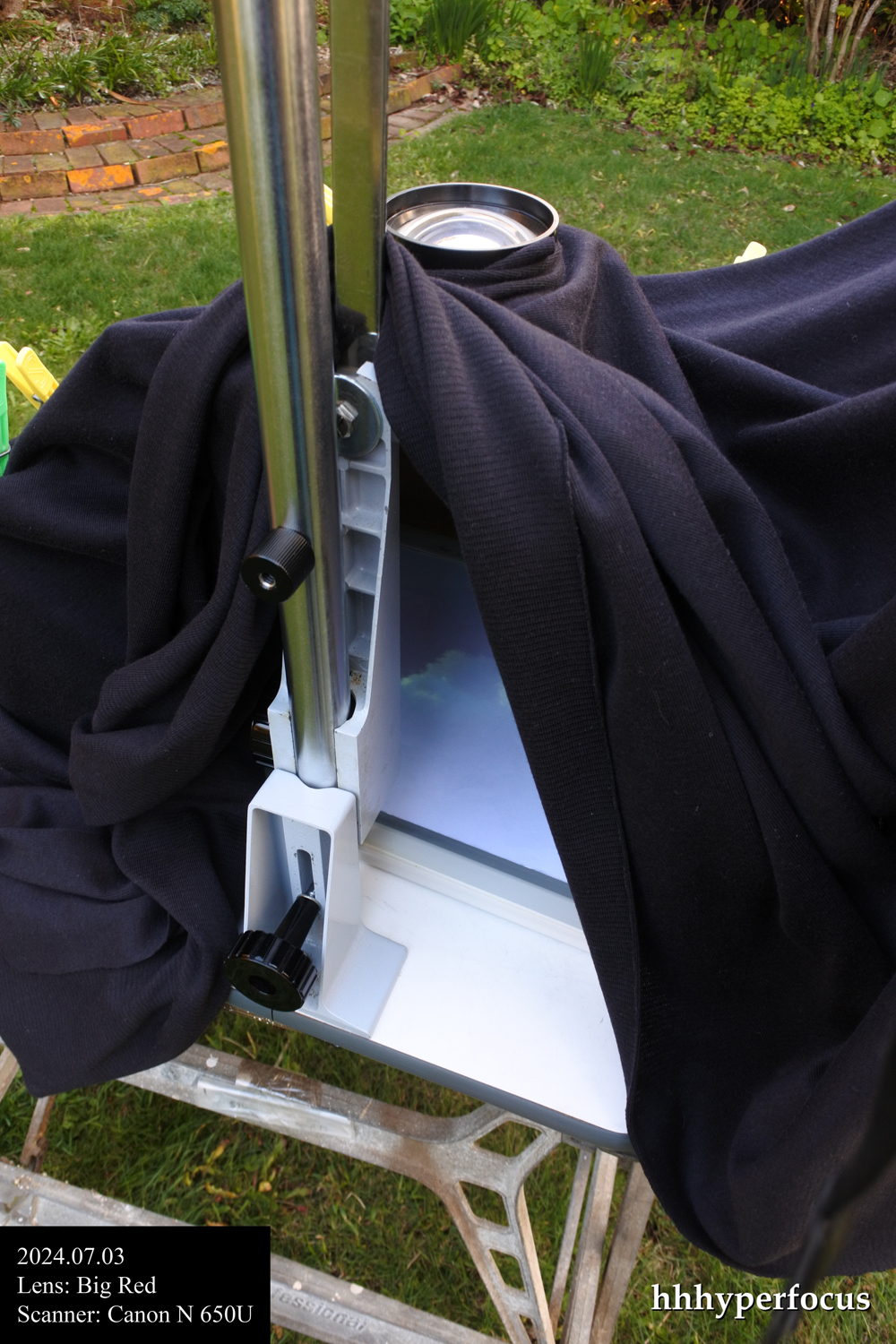
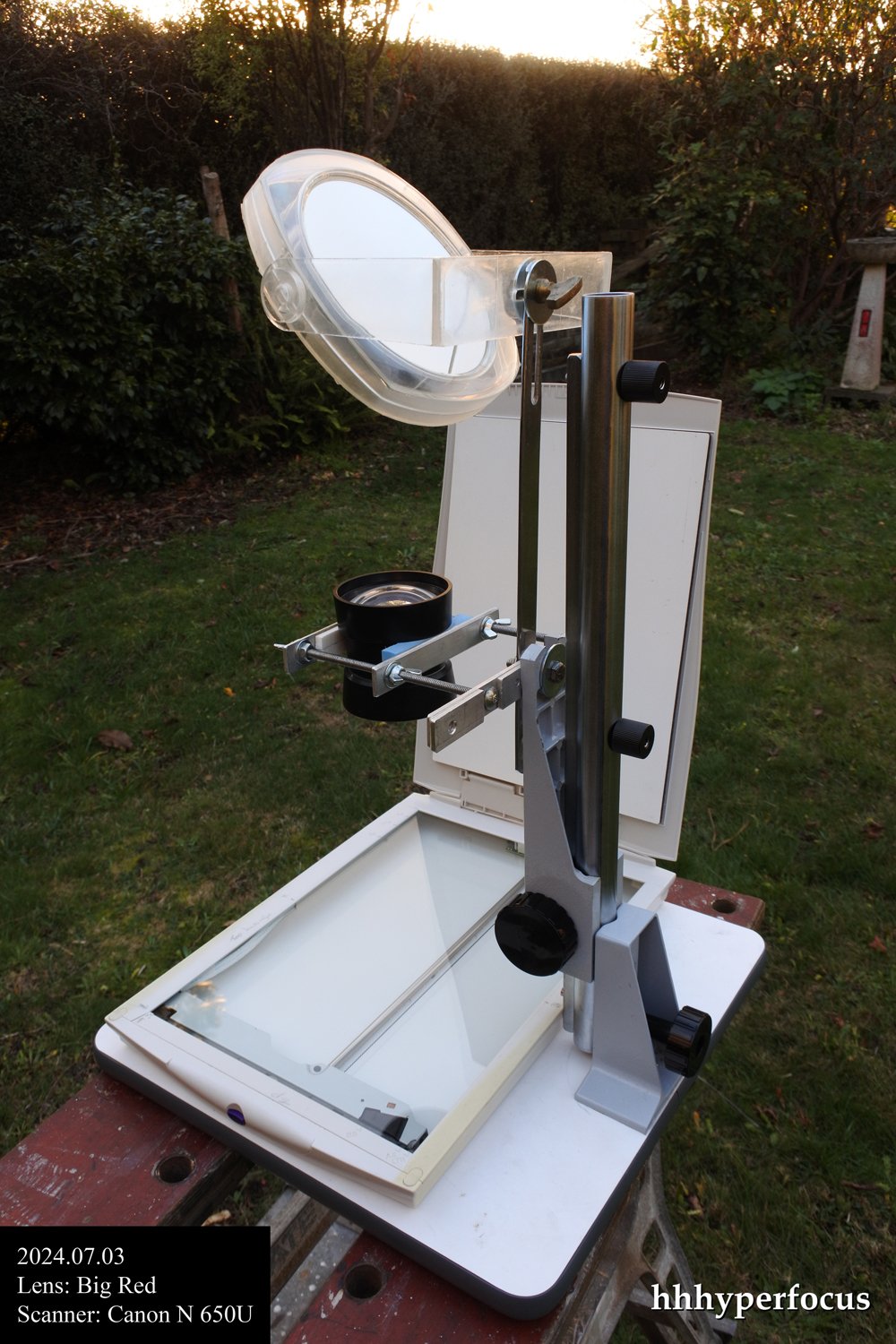
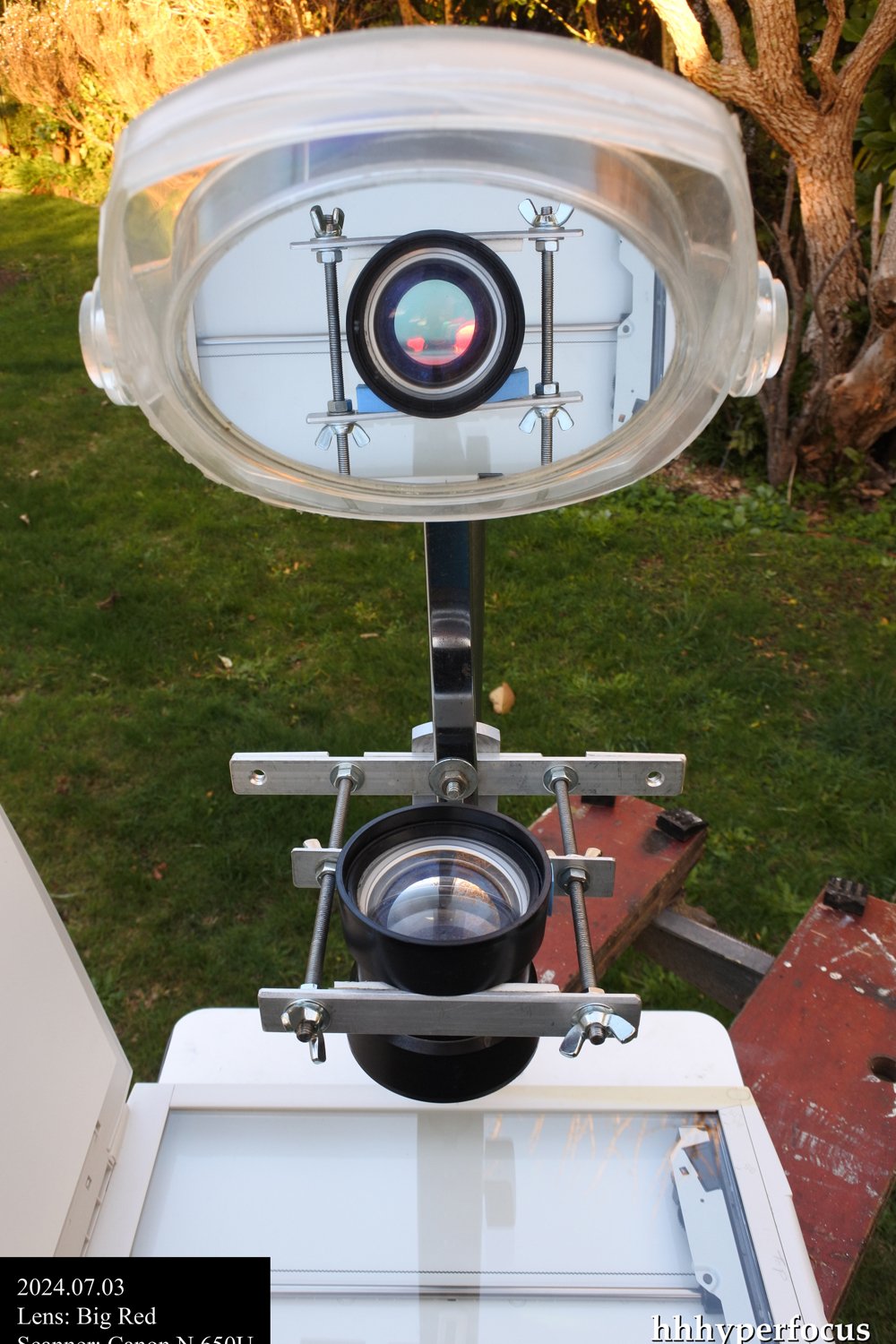

---=== About the rig ===---
I'm using the vertical slider from an old enlarging machine to mount the lens on, because it lets me set the focus. I put a sheet of paper on the glass to focus on, then I remove the paper to capture the image. There's a small gap between the sensor and the glass, so it's not perfect.
And since the lens points straight up, there's a mirror on top which can point to any direction. It looks like a cheap nasty plastic mirror, but the glass is very good quality.
I've looked into modifying the scanner, but it's very challenging. I got as far a lifting the scanner head off the monorail before just putting it all back together. I've since picked up another scanner which I intend to modify. It's much older, so I won't feel bad if I accidentally destroy it.
---=== About lenses ===---
I used two lenses for these photos.
The first one is a 178mm/1.9 Kaylee Bloomed Projection Lens. The front element is 94mm in diameter. I believe it was designed to project from 70mm movie film. Someone has written the label "Cinemascope #2" on the side. I assume whoever wrote that knew what they were doing. When I bid on the auction, I was hoping it would be an anamorphic lens. It isn't, but it is still a very special lens that I'm trying to make use of. Originally I built an adapter to fit my 5d mark1, which works very well, but the full frame sensor crops out a lot of the original image circle... and most of the swirly bokeh.
So the scanner back idea lets me capture the entire image circle for the first time. Admittedly it's in black and white and, if I crop to a 3:2 frame, 1924x1297px. I'm looking into using a diverging lens to magnify the image circle.
The other lens is some kind of industrial lens that I don't know anything about. I call it Big Red. I measured the focal length at about 200mm, and the image circle is massive. It basically covers the entire A4 scanner. It has a built in green pass filter that reflects red light back out thru the front of the lens which makes me suspect that it's an interference filter, not an absorption filter.
---=== About photos ===---
2024.06.15 My first actual photo that wasn't of a ceiling light or a ruler, was taken using the 178mm. I didn't put a lot of thought into it, I was pretty much just testing the waters to see what kind of result I could get. I hadn't even cleaned the scanner glass yet.
I wasn't deliberately trying to capture motion, it just happened to be that the tree was swaying, and the power line was bouncing up and down in the breeze. If you look closely at the left of the frame, you can also make out two power poles on the skyline.
It was a bright sunny day, and my vintage light meter read 13ev with the shutter closed, which is nearly off the scale, so I had to place a stack of things on the front of the lens to reduce the amount of light enough that I didn't get a blown out image. After some experimentation, I ended up with: an ND400 filter, and an adapter with a manual aperture set to about 14mm diameter... I'm probably going to have to buy some more ND filters if I want capture swirly bokeh, or be very selective with lighting conditions.
I used a random black cloth as a light shield. It's thin and light, so it doesn't put a lot of stress on the equipment, it works in low light situations, but in the bright sunlight, I had to stack sheets of cardboard in front of it.
Finally I cropped the image, rotated it, and since it was backwards, corrected it by flipping. And added the text.
2024.07.03 I took the camera to garden with the intention of doing some portraits. But it took so long to set up and adjust that I only managed to get photos of the garden, and the tower on Mt Kaukau. It's much harder to work outside in the cold with the wind blowing the cloth, and it took so much concentration to see the laptop screen that I took all the photos at 50dpi, and forgot to set it back to 600dpi.
I have a fresnel lens that has a focal length of about 400mm, which I placed on the glass behind the main lens. It wasn't as successful as I'd hoped. It does dramatically increase the area of the image that I can scan, but it's still heavily vignetted in the corners. Also, the centers of the two lenses aren't aligned. I intend to move the main lens out over the center of the scanner.
Photographic film
That was worth watching, thank you.
So, I re-installed the prism, luckily it just slots back in. I'm not sure if it helped at all, I still get the much the same result most of the time.
I did manage to get this result. It's black at the top because the lid was closed. I opened the scanner half way thru, and the scan turned white. Then I waved the torch over the sensor and got a definite zigzag. And there's a hint of grey in the middle, which is encouraging.
So, the sensor is still working, it's responding to light, just not in a usable way.